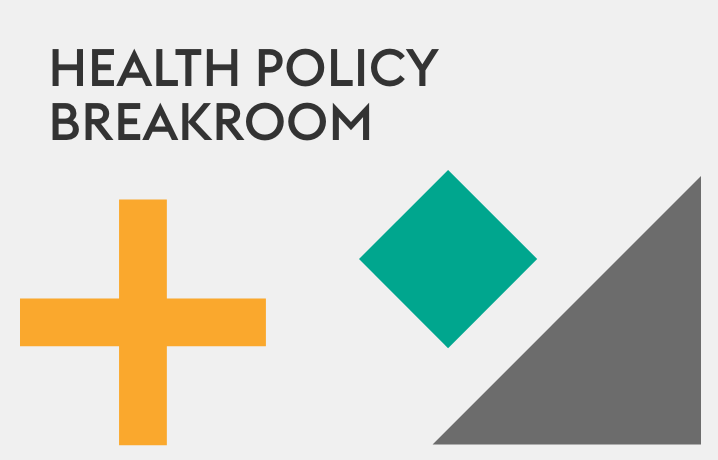55 Insightful Small Business Statistics (2025) – Shopify

The Role of Small and Medium-Sized Enterprises (SMEs) in Achieving Sustainable Development Goals (SDGs)
Small and Medium-Sized Enterprises (SMEs) are critical agents in the pursuit of global sustainable development. Constituting 99.9% of all businesses in the United States, with over 34 million entities, their impact on economic and social frameworks is profound. Globally, SMEs account for 70% of employment and 70% of economic output, positioning them as central to the achievement of the Sustainable Development Goals (SDGs), particularly SDG 8 (Decent Work and Economic Growth), SDG 5 (Gender Equality), SDG 10 (Reduced Inequalities), and SDG 9 (Industry, Innovation, and Infrastructure).
SDG 8: Decent Work and Economic Growth
SMEs are the primary engine for job creation and economic vitality, directly contributing to the targets of SDG 8. Their role in providing employment, fostering entrepreneurship, and driving economic growth is substantiated by extensive data.
Employment and Job Creation
- SMEs with paid employees are responsible for employing 45.9% of the entire US workforce.
- Between March 2022 and March 2023, SMEs generated 2.2 million net new jobs, accounting for 80% of the total increase.
- Historically, from 1995 to 2023, small firms created 61.1% of all net new jobs in the private sector.
- As of April 2025, 56% of small businesses were actively hiring or attempting to hire, indicating sustained demand for labor. However, 85% of these firms reported difficulties in finding qualified applicants, highlighting challenges in the labor market.
- The majority of small employer firms are micro-enterprises, with 49% having four or fewer employees, which supports localized economic resilience.
Economic Contribution and Growth
- A significant portion of SMEs demonstrate strong economic performance, with 41% reporting annual revenues of at least $1 million.
- Despite some pessimism about the broader economy, 69% of small business owners anticipate growth for their own businesses in the coming year.
- In the first quarter of 2025, 65% of SME owners described their business’s health as good or very good.
- Profitability remains a key indicator of sustainability, with 46% of small employer firms reporting a profit in 2023.
Entrepreneurship and Business Formation
- There has been a notable surge in entrepreneurship, with new business applications doubling in 2020 and continuing to rise.
- Between 2021 and 2023, 5.2 million “likely employer” new business applications were filed, a 34% increase from the 2017-2019 period.
- In 2024 alone, 5.2 million new business applications were filed, marking a 48.6% increase from 2019 levels and signaling a robust entrepreneurial ecosystem.
SDG 5 & SDG 10: Promoting Equality and Reducing Inequalities
SMEs play a vital role in fostering inclusive growth by providing entrepreneurial opportunities for women, minority groups, and veterans, directly aligning with SDG 5 (Gender Equality) and SDG 10 (Reduced Inequalities).
Ownership Demographics and Inclusivity
- Gender Equality (SDG 5): Women hold majority ownership of 39.4% of all US firms and 21.6% of all US employer firms, contributing significantly to female economic empowerment.
- Reduced Inequalities (SDG 10):
- Individuals from underrepresented racial groups are the majority owners of 33.6% of all small businesses and 20.9% of employer firms.
- Black-owned businesses constitute 11% of the US total, with 134,000 employer firms providing nearly 1.3 million jobs and an annual payroll of $40.5 billion.
- Hispanic entrepreneurs own over five million small businesses, representing 14.5% of all US small firms.
- Veteran-owned businesses account for 5.5% of total US firms, with more than 1.6 million entities contributing to the economy.
- Generational Diversity: Ownership is spread across generations, with Generation X owning 49% of small businesses, followed by Baby Boomers (30%) and Millennials (21%).
SDG 9: Fostering Innovation and Resilient Infrastructure
The adoption of new technologies and the management of operational challenges by SMEs are crucial for building resilient infrastructure, promoting inclusive and sustainable industrialization, and fostering innovation, as outlined in SDG 9.
Technology Adoption and Digital Transformation
- SMEs are increasingly leveraging technology, with 95% using at least one technology platform for their operations.
- Artificial Intelligence (AI) is being rapidly adopted, with 25% of SMEs already using it for daily operations and another 51% exploring its potential.
- Among SMEs using AI, 91% apply it to marketing tasks, and 76% use it to increase worker productivity.
- A significant 87% of SMEs using AI believe its adoption is critical for market competition.
- E-commerce is a key channel, with 44% of SMEs selling online only and 41% using a hybrid model. The primary drivers are expanding customer reach and increasing sales.
Operational Resilience and Challenges
- Cybersecurity: Maintaining digital security is a major concern, with 60% of owners ranking cybersecurity threats as a top concern. The average cost of a cyberattack in 2024 was $4.9 million, posing a significant threat to SME resilience.
- Supply Chains: Supply chain disruptions were cited as a leading operational challenge by 19% of small businesses, highlighting the need for more resilient systems.
- Financing: Access to capital remains a barrier, with 40% of small businesses reporting difficulty in securing financing, which can impede growth and innovation.
Business Sustainability and Survival Rates
The long-term viability of SMEs is fundamental to their sustained contribution to the SDGs. Understanding survival and failure rates provides insight into the challenges that must be addressed to ensure their continued positive impact.
Survival Metrics
- First Year: Approximately one in five (21.5%) small businesses fail within their first year.
- Five Years: Nearly half (48.4%) of businesses fail within the first five years.
- Ten Years: Approximately two-thirds (65.1%) of businesses fail within a decade.
Industry Variances
- The construction industry exhibits the highest failure rate, with only 30% of small businesses surviving for five years.
- Conversely, the agriculture, forestry, hunting, and fishing sector shows the highest resilience, with over 65% of businesses succeeding for at least five years, indicating that industry-specific factors heavily influence sustainability.
Analysis of Sustainable Development Goals in the Article
1. Which SDGs are addressed or connected to the issues highlighted in the article?
-
SDG 5: Gender Equality
- The article provides specific data on the ownership of small businesses by women, directly connecting to the goal of achieving gender equality and empowering all women and girls, particularly in their economic lives.
-
SDG 8: Decent Work and Economic Growth
- This is the most prominent SDG in the article. The text focuses extensively on the role of small businesses in driving economic growth, creating jobs, and fostering entrepreneurship. It details their contribution to global and national employment and output.
-
SDG 9: Industry, Innovation, and Infrastructure
- The article discusses the adoption of new technologies, such as Artificial Intelligence (AI) and digital platforms, by small businesses. This relates to fostering innovation and upgrading the technological capabilities of economic sectors. It also touches on challenges like access to financing and digital security, which are relevant to building resilient infrastructure and promoting inclusive industrialization.
-
SDG 10: Reduced Inequalities
- The article addresses this goal by providing demographic data on small business ownership among various groups, including underrepresented racial groups, Black entrepreneurs, and Hispanic entrepreneurs. This highlights the role of entrepreneurship in the economic inclusion of all people, irrespective of their race or origin.
2. What specific targets under those SDGs can be identified based on the article’s content?
-
Under SDG 5: Gender Equality
- Target 5.5: Ensure women’s full and effective participation and equal opportunities for leadership at all levels of decision-making in political, economic and public life. The article’s statistics on women owning majority shares in firms (“women hold majority ownership of 39.4% of US firms”) directly relate to their participation and leadership in economic life through entrepreneurship.
-
Under SDG 8: Decent Work and Economic Growth
- Target 8.3: Promote development-oriented policies that support productive activities, decent job creation, entrepreneurship, creativity and innovation, and encourage the formalization and growth of micro-, small- and medium-sized enterprises. The entire article is a testament to this target, detailing how small businesses are crucial for job creation (“Small businesses provide 70% of global employment”) and entrepreneurship (“US entrepreneurs filed 5.2 million new business applications in 2024”).
- Target 8.5: By 2030, achieve full and productive employment and decent work for all women and men. The article’s focus on the massive employment contribution of small businesses (“small businesses employ 45.9% of all US workers” and created “2.2 million net new jobs”) directly supports this target.
-
Under SDG 9: Industry, Innovation, and Infrastructure
- Target 9.3: Increase the access of small-scale industrial and other enterprises… to financial services, including affordable credit, and their integration into value chains and markets. The article mentions that “40% of small businesses report difficulty securing financing” and that new businesses rely on “credit cards, loans, and lines of credit,” highlighting the challenge and importance of access to financial services for small enterprises.
- Target 9.c: Significantly increase access to information and communications technology. The article’s data on technology adoption (“95% of small businesses use at least one technology platform” and “25% of small businesses already use artificial intelligence (AI)”) shows progress and engagement with this target.
-
Under SDG 10: Reduced Inequalities
- Target 10.2: By 2030, empower and promote the social, economic and political inclusion of all, irrespective of age, sex, disability, race, ethnicity, origin, religion or economic or other status. The statistics on business ownership by “underrepresented racial groups” (33.6%), “Black entrepreneurs” (11%), and “Hispanic entrepreneurs” (14.5%) directly measure the economic inclusion of these groups through entrepreneurship.
3. Are there any indicators mentioned or implied in the article that can be used to measure progress towards the identified targets?
-
For SDG 5 (Target 5.5)
- Indicator: Proportion of firms owned by women. The article states, “women hold majority ownership of 39.4% of US firms” and “women own 21.6% of all US employer firms.”
-
For SDG 8 (Target 8.3)
- Indicator: Proportion of informal employment in total employment. While not directly stated, the article’s focus on registered businesses (S corps, LLCs) and job creation implies a contribution to the formal economy.
- Indicator: Contribution of small businesses to total value added and employment. The article provides several data points: “Small businesses provide 70% of global employment and generate 70% of output,” and they “employ 45.9% of all US workers.”
- Indicator: Number of new business applications. The article notes, “US entrepreneurs filed 5.2 million new business applications in 2024.”
-
For SDG 9 (Targets 9.3 and 9.c)
- Indicator: Proportion of small-scale enterprises with a loan or line of credit. The article implies this through the statistic that “40% of small businesses report difficulty securing financing.”
- Indicator: Proportion of businesses using specific technologies. The article states, “25% of small businesses already use artificial intelligence (AI)” and “95% use at least one technology platform.”
-
For SDG 10 (Target 10.2)
- Indicator: Proportion of firms owned by specific demographic groups. The article provides several such indicators: “Individuals from underrepresented racial groups are the majority owners of 33.6% of all small businesses,” “Black-owned businesses make up 11% of the US total,” and “Hispanic-owned businesses represent 14.5% of all US small firms.”
4. Summary Table of SDGs, Targets, and Indicators
| SDGs | Targets | Indicators Identified in the Article |
|---|---|---|
| SDG 5: Gender Equality | 5.5: Ensure women’s full and effective participation and equal opportunities for leadership in economic life. |
|
| SDG 8: Decent Work and Economic Growth |
8.3: Promote entrepreneurship, creativity and innovation, and encourage the growth of micro-, small- and medium-sized enterprises.
8.5: Achieve full and productive employment and decent work for all. |
|
| SDG 9: Industry, Innovation, and Infrastructure |
9.3: Increase the access of small-scale enterprises to financial services.
9.c: Increase access to information and communications technology. |
|
| SDG 10: Reduced Inequalities | 10.2: Empower and promote the social and economic inclusion of all, irrespective of race or ethnicity. |
|
Source: shopify.com

What is Your Reaction?
 Like
0
Like
0
 Dislike
0
Dislike
0
 Love
0
Love
0
 Funny
0
Funny
0
 Angry
0
Angry
0
 Sad
0
Sad
0
 Wow
0
Wow
0


-1920w.png?#)




































































